Knights of the Order of the Crescent is a worthy discussion since we know that the crescent moon is an indigenous symbol from Southern Arabia, aka, Mexico, since Mexico was Southern Arabia and Mexico means, “In the center of the Moon”: https://rb.gy/himgj1.







A French Canadian Maur by the name of Ann Marie Bourassa sent me a link to the Armorial Chevaliers (Knights) of the Order of the Crescent and the images in this post spoke to my DNA, since my maternal surname, “Chavis” means the Goat and Brave boy: https://rb.gy/qk2k10.
Chavis/ Chavers is also short for Chevaliers, since the Chavis are a Royal family of knights that is associated with bravery and passing the BAR. Chevaliers is French for Knights since the number one code of the knights is chivalry, which means bravery. During the old-world chivalry (honor) was established from being brave in battle, and cavalry is another word that is derived from chevaliers since cavalry means an army of mounted braves (Knights) on horses.
In 1066 during the Battle of Hastings, my French royal family of Shivers, which is French for Chavis, as knights, helped the French Viking King, “William the Conqueror,” a Danite, conquer England with the aid of two dragons and were given the Shivers Mountains in England by William the Conqueror due to the acts of Chivalry (bravery=Knighthood) on the battlefield: https://rb.gy/n9vlao.
Here is the link to the Armorial Knights of the order of the Crescent: https://rb.gy/y2hpa4. This link is in French, but you can use Goggle Translate to translate the French into English.
Please, avoid the hijack with the whitewash when reading the Armorial Knights link, because the original French were the Franks or Gauls (Gullah Geechee/ Galilee), and they were French Maurs (Merovingians): https://rb.gy/posjrm.
“Franks (Franci), a Germanic people who conquered Gallia (Gaul), and made it Francia (France).” [End quote from Oxford Classical Dictionary]. “Gaul, French Gaule, Latin Gallia, the region inhabited by the ancient Gauls, comprising modern-day France and parts of Belgium, western Germany, and northern Italy”: https://www.britannica.com/place/Gaul-ancient-region-Europe.
The Americas has the most place names associated with Gaul/ Gales/ Gules/ Gola/ Galley/ Gullah/ Galilee/ Gaelic (France). For example, Galesburg, Illinois; Galilee, Pennsylvania; Angola, Louisiana; Angola, Indiana, etc. Some of the African slaves allegedly came from Angola, aka, the Congo (Congo, Alabama*), which is a country allegedly in Africa on the Slave Coast. Gola, which is short for Angola (An-Gola), is also Gula as in Gullah Geechee – Seminole and Creek (Greek) Indians: https://msuweb.montclair.edu/~sotillos/moore.htm.
Guale was a historic Native American chiefdom (Tribe) of Mississippian culture peoples located along the coast of present-day Georgia and the Sea Islands. This tribe of Guale Indians were Maurs (Maur-iners as in Marine and Mar/ Mer as in sea), aka, Sea people. Guale was once a city on the Sea Coast of Georgia that is now extinct and so is this tribe of Indians (Washitaw Muurs = Yamasees and the five civilized tribes), due to Spanish conquest: https://www.americaistheoldworld.com/gibraltar-of-the-west/.
In South America we have the Spanish equivalent to the Gullah Geechee, the “Gualeguaychú.” Gualeguaychú is a city in the province of Entre Ríos, Argentina, on the left bank of the Gualeguaychú River (a tributary of the Uruguay River). In Mexico, we have Guatemala, which is a derivative of Gaul since the prefix Guate in Gutemala is Gaul.
This book, “Africa vs. America,” demonstrates that Europeans copied ancient Ghana that was in South America (Guyana) and built a second Ghana on the other coast [Africa], which is known as Congo or Angola. Africa vs. America,” by Isabel Alvarez: https://www.americaistheoldworld.com/ancient-ghana-is-guyana/.
This FB post deals with a French Merovingian Queen, nicknamed “The She Wolf,” since she convinced a Baron (wizard), Lord Roger Mortimer, to help her to overthrow her gay husband, King Edward II of England to take the crown: https://rb.gy/7g9b4s.
Speaking of the She Wolf, the Capitoline Wolf is the She Wolf and is a symbol of the founding of Rome. The wolf is a sacred symbol of the Turks and the Danites. The Americas has 13 Capitoline Wolf Statues, which suggests that the greater Rome or Imperial Rome was in the Americas. Rome is derived from the Egyptian word Ramen and the Hebrew word Rimon, which means pomegranate. The pomegranate is a symbol of Granada Land (the promised land), which was in the Americas: https://www.americaistheoldworld.com/imperial-rome-and-italy-superior/.
The Armorial Knights of the order of the Crescent has a few coats of arms with the She Wolf in the center of the moon. Mother Mary/ Maya/ Meru, aka, the Queen of Heaven, is shown in many images as the Venus Star Transit, which is the Mayan 5-pointed Star, standing in the center of the crescent moon. The wolf is code for the Dragon, aka, the constellation Draco when its Star Theban was the Pole Star or the North Star.
Who was Rene d’Anjou?
In this post are some images of the Royal Knights’ coat of arms of the Order of the Crescent, instituted by King René d’Anjou, ms. Fr. 5225. Statues of the Order of the Crescent, founded by René d’Anjou (1448), ms. Fr. 25204. (Source: gallica.bnf.fr, National Library of France).
The Ordre du Croissant (Order of the Crescent; Italian: Ordine della Luna Crescente) was a chivalric order [knights’ order] founded by Charles I of Naples and Sicily in 1268. It was revived in 1448 or 1464 by René I of Naples, the king of Jerusalem, Sicily and Aragon (including parts of Provence), to provide him with a rival to the English Order of the Garter. René was one of the champions of the medieval system of chivalry and knighthood, and this new order was (like its English rival) neo-Arthurian in character. Its insignia consisted of a golden crescent moon engraved in grey with the word LOZ, with a chain of three gold loops above the crescent. On René’s death, the Order lapsed.
The Armorial Knights of the Order of the Crescent, also known as “Order of the Crescent in the Provence,” a French chivalric order was founded on 11 August 1448 in Angers by King Rene of Provence as a court order. The order, which united itself, features from knighthood and spiritual orders, and counted up to fifty knights, of which can be dukes, princes, marquises, viscounts, and knights with four quarters of nobility.
The Knights committed themselves to mutual assistance and loyalty to the order which, after the Provence became part of France in 1486, was soon forgotten. Ackermann mentions this knighthood as a historical order of France.
In this post is a poorly whitewashed image of King Rene of Anjou since he is still swarthy (dark/ Black) in this image. King Rene was the grandson of King John II of France, aka, John the Good, who was undoubtedly a Naga/ Negro: https://rb.gy/onckrm.
René of Anjou (Italian: Renato; Occitan: Rainièr; Catalan: Renat; 1409–1480) was Duke of Anjou, King of Jerusalem, King of Sicily, King of Aragon (Gules), and Count of Provence [Province, Maine*] from 1434 to 1480, who also reigned as King of Naples as René I from 1435 to 1442 (then deposed as the preceding dynasty was restored to power). Having spent his last years in Aix-en-Provence, he is known in France as the Good King René (Occitan: Rei Rainièr lo Bòn; French: Le bon roi René).
René was a member of the House of Valois-Anjou, a cadet branch of the French royal house, and the great-grandson of John II of France. He was a prince of the blood, and for most of his adult life also the brother-in-law of the reigning king Charles VII of France. Other than the aforementioned titles, he was for several years also Duke of Bar and Duke of Lorraine.
René was born on 16 January 1409 in the castle of Angers.[2] He was the second son of Duke Louis II of Anjou, King of Naples, by Yolanda of Aragon.[2] René was the brother of Marie of Anjou, who married the future Charles VII and became Queen of France.[3]
Anjou is just a Latinized way of saying Andros/ Andrews, so we are dealing with Saracens (old Arabs) of the lost 10 lost tribes of Israel that were descendants of the first Apostle Saint Andrew: https://the-red-thread.net/genealogy/andrews.html.
Greater France or France Superior in the Americas:
If you have read my post about Imperial Rome and Italy Superior you already know that Italy Superior was La Floridas and there is also a Naples, Florida, which suggests that Rene Anjou was once the king of Naples, Florida since La Floridas was the original Italy.
Remember that France borders Italy, which means that since Italy Superior was in the Americas Greater France or France Superior was also in the Americas. Now, if we include Gules/ Gual (Aragon) and Maine, it leaves no doubt that this history is referring to Greater France in the Americas since the Imperial Rome and Italy Superior post proves that Africa, Europe, and the Middle East was originally in the Americas.
Maine and the New England states were once part of French Acadia and this territory was once known as Nova France (New France), according to old maps from the 1500’s – 1700’s, however, we know that it is nothing new about Nova France since the Americas is the East (the Orient) and the old world. Maine also has a Bar Harbor, now a resort for the wealthy. Notice that when you read the description of the coat of arms in the Armorial Knights link you will see a few references to Bar and Maine, which suggests that ancient Frankish (French) history is referring mostly to the Americas.
France borders Italy, according to modern-day maps, therefore, this post is more evidence confirming that the original France was in the Americas since Florida was Italy Superior.
King Anjou was born and buried in Angers, France. Angers sounds a lot like Algiers, Louisiana. Algiers was part of the Ottoman Empire that was originally in the Americas: https://www.americaistheoldworld.com/the-ottoman-empire-in-the-americas/.
The French and the Ottoman Turks as Moormans (Danites=Vikings=Sea people) were blood allies against Spain (Rome) during the Crusades or Holy Wars. Louisiana has France written all over it since Louisiana is called Cajun Country. Plus, the prefix of Louis in Louis-iana is a French name that is associated with a long list of French Kings. Cajun and Acadian (Akkadian) are the same word. In fact, Louisiana used to be a part of the Acadian Republic. Louisiana is called the boot kicking state since Louisiana is shaped like a boot, and so is Italy and Florida. Louisiana has a French Quarters and the people called themselves Cajuns (Acadians).
Additionally, the city of New Orleans, Louisiana, is called the Crescent City and it shares the same place names as Orleans, France. Louisiana also has Parishes (Parish=Paris), which is derived from Paris, as in Paris, France. Paris means “For Isis” or “City of Isis,” and Paris is short for Paradise. Baton Rouge (Louisiana) is a French word that means Red Stick.
The New Orleans Saints logo is the fleur-de-lis (Florida*). It’s a French word that means lily flower in English. French Maurs (High Priest of Anu) known as the Merovingians introduced the fleur-de-lis as a symbol of France, which is sometimes spelled fleur-de-lys; and it is a stylized lily or iris commonly used for decoration. In fact, translated from French, fleur-de-lis means “lily flower.” Fleur means “flower,” while lis means “lily.” The interesting thing about the fleur-de-lis or Lily Flower is that it is derived from the Bee, and it is just an upside-down Bee: https://rb.gy/jpasca.
AGOULT (Fouquet or Foulques d’)
Or, to the ravishing wolf Azure, armed, langued and vilené Gules (1).
Baron of Mison, of La Tour-d’Aigues, of Sault and of Forcalquier, lord of Thèze, Barret, Volone, La Bastide, Peypin, Niozelles, etc., chamberlain of René d’Anjou, viguier of Marseilles (1443, 1445 and 1472); son of Raymond and Louise de Glandevès-Faucon, his second wife; married: 1° with Jeanne de Beaurain; 2° with Jeanne de Bouliers; died without posterity at La Tour-d’Aiguës in 1492, nearly 100 years old.
Fouquet d’Agoult had been nicknamed by his contemporaries the Great and the Illustrious, in view of his love of justice, his magnificence and his liberality. Nostradamus (2) reports that “after the death of this so good and so excellent Roy (René d’Anjou) several and various eulogies, epitaphs and learned compositions were placed on his tomb, in the church of the Convent of the Carmelites of the City of Aix…The eulogies were in various languages, Hebrews, Greeks, Latins, French, Italians, Cathalans and Provencals, which the magnificent Fouquet d’Agoult, lord of Sault, had collected and transcribed exactly by the express command de la Reyne his second wife.
(1) All the genealogists and heraldists describe the d’Agoult coat of arms in the terms we have just used; however, the wolf is always represented crawling and not ravishing, that is to say holding its prey in the mouth. We didn’t want to change anything in the accepted description; but it was necessary to point out that it does not agree with the representation of the coat of arms. In 1220, the seal of Raymond II d’Agoult bore a passing wolf.
(2) History and Chronicle of Provence, p. 646.
ANJOU (Charles I of)
Azure, semé of fleurs-de-lis Or, to the lion Argent set in quarter; bordered gules.
Count of Maine, Guise, Mortain, viscount of Châtellerault, lieutenant general for the king in Languedoc and Guyenne; third son of Louis II of Sicily and Yolande of Aragon; married: 1°, before 1434, with Cobelle Ruffo (2), widow of Jean-Antoine Marzano, Duke of Sessa, Prince of Rossano, daughter of Charles Ruffo, Count of Montalto and Corigliano, Grand Justice of the Kingdom of Naples, and of Cevareila de Saint-Séverin (see this name); 2°, by contract of January 9, 1443, with Isabelle de Luxembourg, daughter of Pierre de Luxembourg, count of Saint-Pol, and of Marguerite des Baux; born in the castle of Montils-les-Tours, October 14, 1414; died at Neuvy, in Touraine, on April 10, 1472, and buried in the church of Saint-Julien in Le Mans.
(2) Through this alliance, Cobelle Ruffo had become the sister-in-law of three kings, Louis III of Sicily, René of Anjou and Charles VII. Polyxène Ruffo, his sister, first married François-Alexandre Sforza (see this name).
ANJOU (Jean d’)
Per fess of one party, of two, which makes six quarters: 1 barage Argent and Gules, of eight pieces (HUNGARY); 2nd, Azure, strewn with fleurs-de-lis Or, a label Gules, five pendants in chief (ANJOU-SICILY); 3 Argent, to the cross of Jerusalem Or, at angle (JERUSALEM); 4th, azure, strewn with fleurs-de-lis or, a border gules (ancient ANJOU); 5th Azure, strewn with recrossed crosses set foot Or, two bars backed by the same debruising over all (BAR): 6th Or, a bend Gules charged with three alerions Argent ( LORRAINE); a label Gules three pendants in chief, debruising on the large quarters.
Duke of Calabria and Lorraine, senator of the Crescent (1470); eldest son of René d’Anjou and Isabelle de Lorraine; married, by treaty of April 2, 1437, with Marie de Bourbon, daughter of Charles I, Duke of Bourbon, and Agnès de Bourgogne; born in Toul on August 2, 1426, died in Barcelona on December 16, 1470, and buried in Angers, in the church of the Cordeliers (1).
(1) On a glass roof of this church, this prince was represented on his knees, his hands joined, a floral crown on his head, and wearing a loose coat with a turned down collar. In front of him was the coat of arms described above, supported by the emblem of the order of the Crescent with its motto. (MONTFAUCON, op. cit., t. II, pl. LXI11). These arms are absolutely identical to those which appear on a counter-seal of Jean d’Anjou, affixed to a document of 1465 (DOUET D’ARCQ, Collection de sceaux, t. I, n°789).
ANJOU (René d’)
Cut from one, from two, which makes six quarters; to 1 of HUNGARY; at 2 d’ANJOU-SICILY; at 3 of JERUSALEM; at 4 d’ANJOU old; at 5 of BAR; at 6 LORRAINE; over all Or, four pales Gules (ARAGON).
King of Naples, Sicily, Jerusalem and Aragon, Duke of Anjou, Lorraine and Bar, Count of Provence, Senator of the Crescent (1449); son of Louis II, Duke of Anjou, King of Naples, and Yolande of Aragon; married, in first marriage, by treaty of March 20, 1419, with Isabelle de Lorraine, eldest daughter and heiress of Charles II, Duke of Lorraine, and of Marguerite de Lorraine; in second marriage, September 10, 1454, with Jeanne de Laval, daughter of Guy XIV, Count of Laval, and Isabelle de Bretagne; born in Angers on January 16, 1409, died in Aix on July 10, 1480, and buried in the church of Saint-Maurice in Angers on October 26, 1481.
From the institution of the Armorial Knights of the Order of the Crescent, King René accompanied these coats of arms (1) (still existing in 1620, at Saint-Maurice d’Angers) with the insignia of the order (2), which he had painted and sculpted on a large number of monuments and works of art, to engrave on its seals (3) and to embroider (4) on its tapestries and ceremonial costumes.
(1) On the subject of the various coats of arms carried successively by René, see our work: La Croix de Jerusalem dans le Blason, p. 14.
(2) Ung radiant and marvelous crescent,
Garny of fine gold and white enamel, Of which
there was in frank writing,
Loz in crescent in engraved and understood,
Such motto had this lord taken.
Not without reason, for his loz would grow
On all living beings who had loz and be.
(OCTAVIE DE SAINT-GELAIS, Le Séjour de l’Honneur.)
(3) Some of these seals have a double crescent on the reverse that Mr Douet d’Arcq (collection of seals, n°11783) took for two bags or stacked purses.
(4) In 1448, Pierre du Villant, painter and embroiderer to the King of Sicily, two professions closely united in the Middle Ages, executed four embroidered crescents for his new order of chivalry (LECOY DE LA MARCHE, Extracts from accounts and memorials, n ° 632).
CHAMPAGNE (Peter I of)
Sable, fretty Argent; a chief or charged with a lion issanl gules (1). Currency (2): Sta closes.
Lord of Champagne, Pescheseul, Lonvoisin, Bailleul and Parcé, Prince of Montorio and Aquila, First Baron of Maine, Viceroy of Sicily and Anjou; third son of Jean III of Champagne and Ambroise de Crénon; married, according to contract of April 22, 1441, with Marie de Laval, sister of Guy de Laval (see this name), and daughter of Thibaut and Jeanne de Maillé-Brézé; died in Angers, almost a hundred years old, on October 15, 1486, and buried on the 22nd of the same month, in the church of Saint-Martin de Parce (3).
This valiant knight, who had distinguished himself in many battles, won two great victories against the English: the first in 1442, in the plain of Saint-Denis d’Anjou, and the second in 1448, before Beaumont-le-Vicomte. The following year, Jean d’Anjou gave him the order to help Charles VII against the English, and he covered himself with glory at the Battle of Formigny (1450).
(1) In the 17th century, this family sought to attach itself to the illustrious house of the Counts of Champagne and took its arms, which are: Azure with a silver band, bordered by two
cotices potent and counter-potentiated Golden.
(2) Motto and coat of arms still visible in 1620, in the chapel of the Knights of the Crescent in Saint-Maurice d’Angers.
(3) The epitaph engraved on his tomb had been composed, it seems, by the king.
SFORZA (François-Alexandre)
Quarterly: 1st and 4th Or, to the eagle Sable crowned of the first (LOMBARDY); 2nd and 3rd, Argent, to the bisse Azure in pale, crowned Or, giving birth to a child Gules (VISCONTI-MILAN).
Duke of Milan (1454); natural son of Muzio Attendolo dit Sforza, lord of Cotignola, and Lucrezia Trezana or Tresciano; husband: 1° of Polyxène Ruffo, widow of Jacques Marilli (?) Grand Seneschal of the Kingdom of Naples, daughter of Charles Ruffo, Count of Montalto and Corigliano, and of Cevarella de Saint-Séverin; 2° (August 1, 1441) of Blanche-Marie Visconti, natural daughter of Philippe-Marie Visconti, Duke of Milan; born at San-Miniato (Tuscany), July 25, 1401, died at Milan, March 8, 1466.
As you can see, the Armorial Knights of the Order of the Crescent were very distinguished and extraordinary gentlemen and so was their King, Rene of Anjou since King Rene was a Saracen (Moslem) that was the King of Jerusalem, Sicily, Naples, and Aragon. In this post is an image of Moslem-Jerusalem, which looks very Moorish with the Crescent moons at the top of those Maurice domes. I love the Phoenician purple trim too at the top. This image is a full-page miniature of Jerusalem and the Dome of the Rock Image taken from feature 5 of Book of Hours, Use of Paris (‘The Hours of René d’Anjou’). Written in Latin, calendar, and rubrics in French: https://picryl.com/media/jerusalem-from-bl-eg-1070-f-5-4d2417.
The royal coats of arms of the Knights of the Order of the Crescent display powerful images of occult symbols like the kingfish (fisher king), the Falcon (Horus), and the Bee/ Beetle. The Fleur-de-lis symbol is an upside-down bee. We know that the study of the birds (falcons) and the bees/ beetles is real sex (love) through alchemy, and this advanced knowledge (magic) that was acquired from Thoth/ Thought was used to create an Eden style of government or Ethiopia = Utopia that was based on free energy and a resource-based economy: https://www.americaistheoldworld.com/teotihuacan-is-the-home-of-thoth/.
The fisher kings who were Fishers of men, aka, Magi’s, were the High Priest of Anu (Maurs) from Nineveh, which was Jacksonville, Florida, and surrounding areas. Nineveh means place of fish or House of fish and is the home of Prophet Jonah of the Bible: https://www.americaistheoldworld.com/nineveh-was-jacksonville-florida/.
Speaking of Jonah, a fish/ whale swallowed him for 3 days and then spit him out, which is code for him being born from a dragon, making Jonah a messiah, a Christ-king, and/or a Dragon-king: https://rb.gy/dsgf9g.
In this post is the coat of arms of royal knight, SFORZA (François-Alexandre), that depicts a Maur (High priest of Anu) being born from a blue dragon since serpents/ dragons don’t eat their prey feet-first. Also, notice the double headed Turkey of the Holy Roman Empire on the coat of arms. People think that this bird is an Eagle when it really is a Turkey, since Turkeys have beards and Eagles don’t. If you view different images of Hapsburg (Holy Roman empire) coat of arms you see that the bird on this coat of arms is clearly a double headed Turkey with a red beard. The Turkey is indigenous to the Americas and so is the Roman Empire. The Turkey is a hybrid bird that was spliced together with light codes (sound frequencies), aka, light alchemy, by Turkmen/ Moorman long ago using a combination of the Tukey Buzzard and the Chicken (the base metals) to create another meat source known as Turkey (the gold or good product).
I know this Roman History is confusing because Rome was a global empire that was on both sides of the world, however, the legit honorable Roman Empire that was in the Americas and under French Washitaw rule was overthrown by the duplicate Christian and Catholic Rome in Europe since the American version of the Romans were Saracens (Moslems) and pagans (Hebrews) that were labeled as infidels, in the eyes of the duplicate Roman hijack.





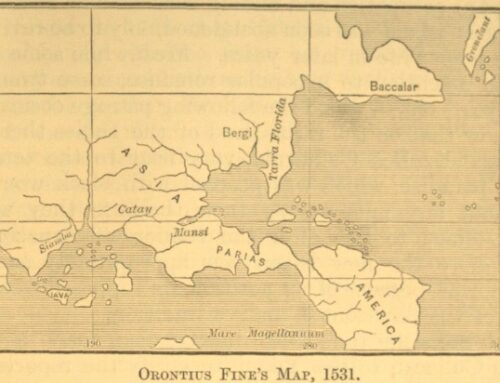
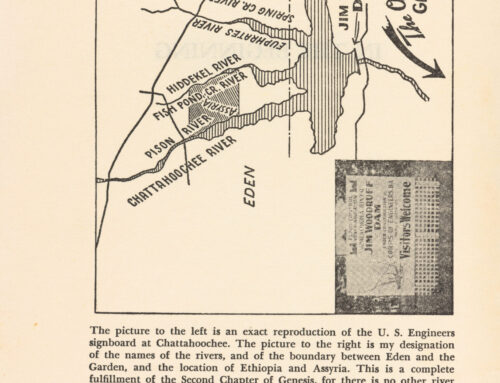
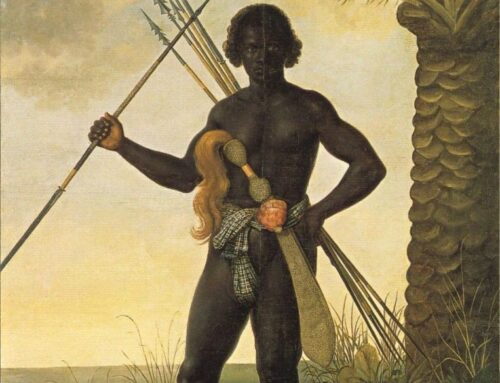
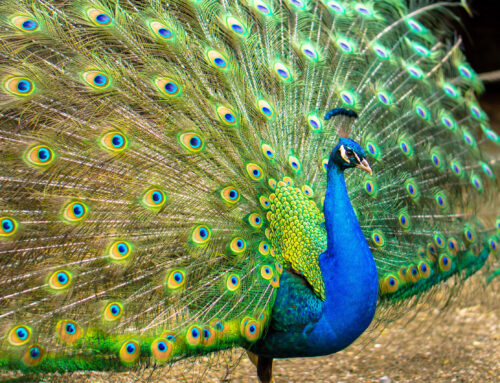
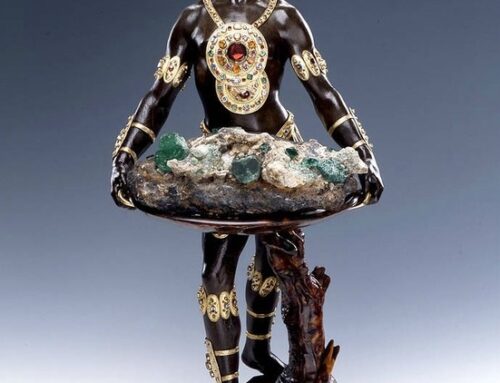
my mind is completely blown omg
Thanks for reading and for commenting.